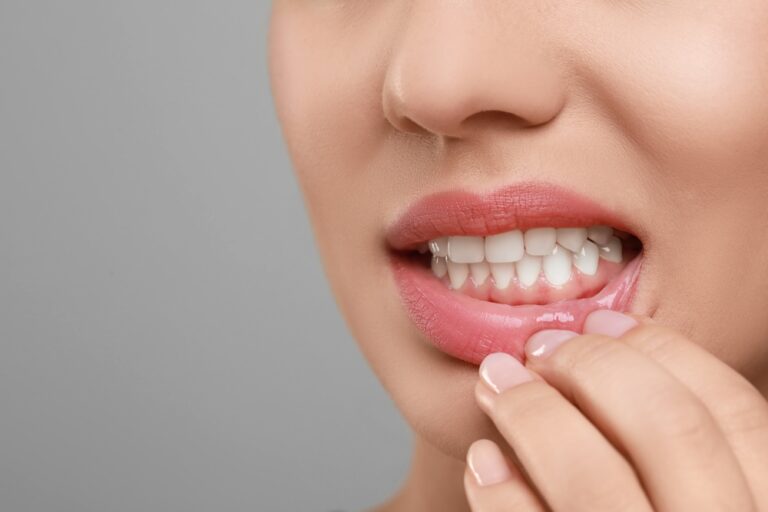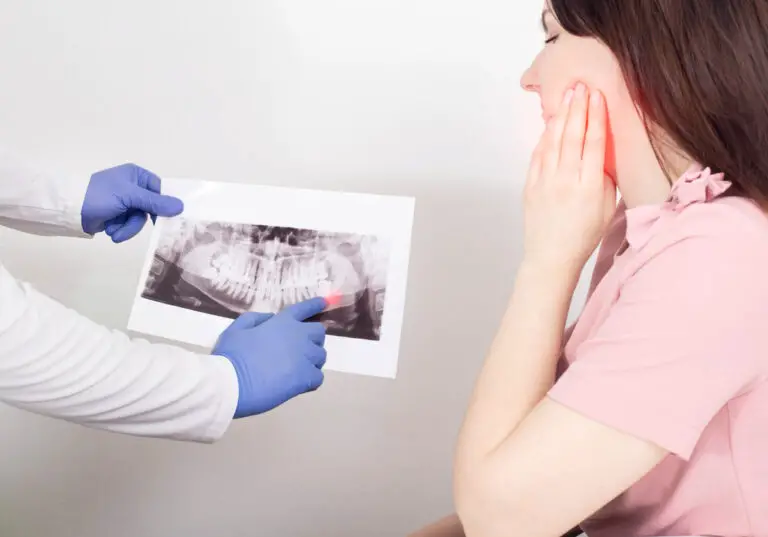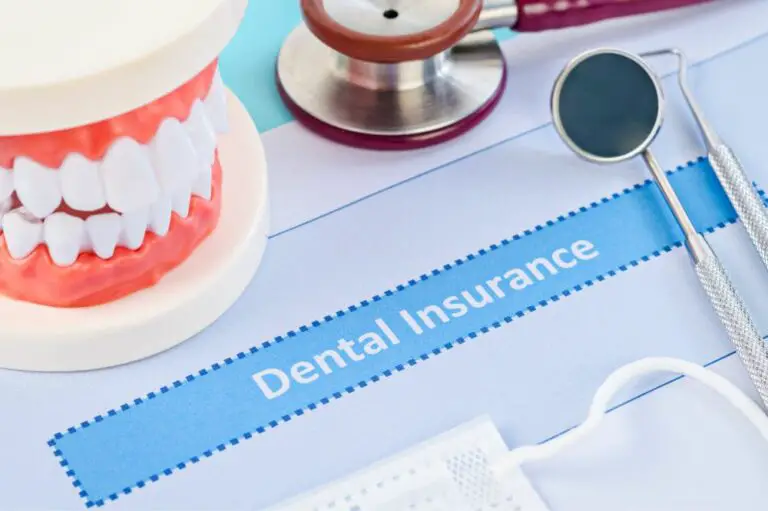What causes gums to turn white?
There are several potential reasons you may notice your gums turning white. The most common causes include:
1. Plaque buildup
Plaque is a sticky film made up of bacteria, food debris, saliva, and mucus that constantly forms on the teeth. When plaque accumulates along the gumline and is not removed by brushing and flossing, it can trigger gingivitis. Gingivitis is inflammation of the gums caused by irritation from plaque bacteria.
As gingivitis progresses, the gums become swollen, red, and bleed easily. In more advanced stages, the inflamed gum tissue can lose blood supply and turn white or pale pink, along with receding from the teeth. This change in color is most noticeable along the margin between the teeth and gums. The medical term for this is gingival recession.
If the white discoloration is due to plaque buildup, improving your oral hygiene techniques should help treat gingivitis and reverse the problem. Be sure to brush thoroughly along the gumline, not just on the biting surfaces. Using small circular motions allows the bristles to remove plaque from beneath the gum margins.
Flossing daily and using antiseptic mouthwash can also help reduce plaque. Your dentist may recommend coming in more frequently, such as every 3 months, for professional cleanings to manage plaque buildup.
2. Gum disease
Advanced gum disease is another common reason for white gums. Also called periodontitis, this progressive condition occurs when gingivitis is left untreated. Plaque spreads below the gumline, causing the gums to pull away from the teeth.
As the gums separate from the teeth, pockets form which become infected by even more harmful bacteria. Pus may drain from the infected pockets, and the gums begin deteriorating. Without treatment, periodontitis can destroy the bones, ligaments, and connective tissues keeping the teeth anchored.
In addition to white, receded gums, symptoms of periodontitis include:
- Red, swollen, or tender gums
- Persistent bad breath
- Gums that bleed easily, even with gentle brushing
- Loose or shifting teeth
- Changes in tooth alignment or bite
- Receding gums revealing more tooth root surface
- Pus discharge between teeth and gums
- A change in how dentures or partials fit
Periodontitis requires prompt treatment to stop irreversible damage. This involves deep cleanings called scaling and root planing to clean beneath the gums. Antibiotics or antimicrobial rinses may also be used to reduce infection. In advanced cases, gum surgery can treat diseased tissue and regenerate lost bone.
Without successful treatment, periodontitis can eventually lead to tooth loss. This is because it destroys the tissues keeping teeth anchored in their sockets. Practicing excellent oral hygiene and getting frequent dental cleanings is key to preventing gum disease.
3. Leukoplakia
Leukoplakia results in thick, white spots or patches forming on the gums, tongue, inner cheeks, or lips. These raised white patches cannot be scraped off or wiped away, unlike debris or coating on the surface.
Although mostly harmless, leukoplakia lesions can in rare cases become cancerous. The whitish appearance is caused by overgrowth and thickening of the outer layer of epithelial cells.
Leukoplakia of the gums is usually associated with chronic irritation, often from:
- Smoking cigarettes, pipes, or cigars
- Chewing tobacco
- Poorly fitting dentures, fillings, or crowns
- Broken teeth
- Regular alcohol consumption
The white gum patches may disappear on their own once sources of irritation are removed. But persistent cases may require destroying and removing the affected tissue through surgery, lasers, or cryotherapy. Your dentist will check for any dysplastic or precancerous changes that require further testing.
4. Oral lichen planus
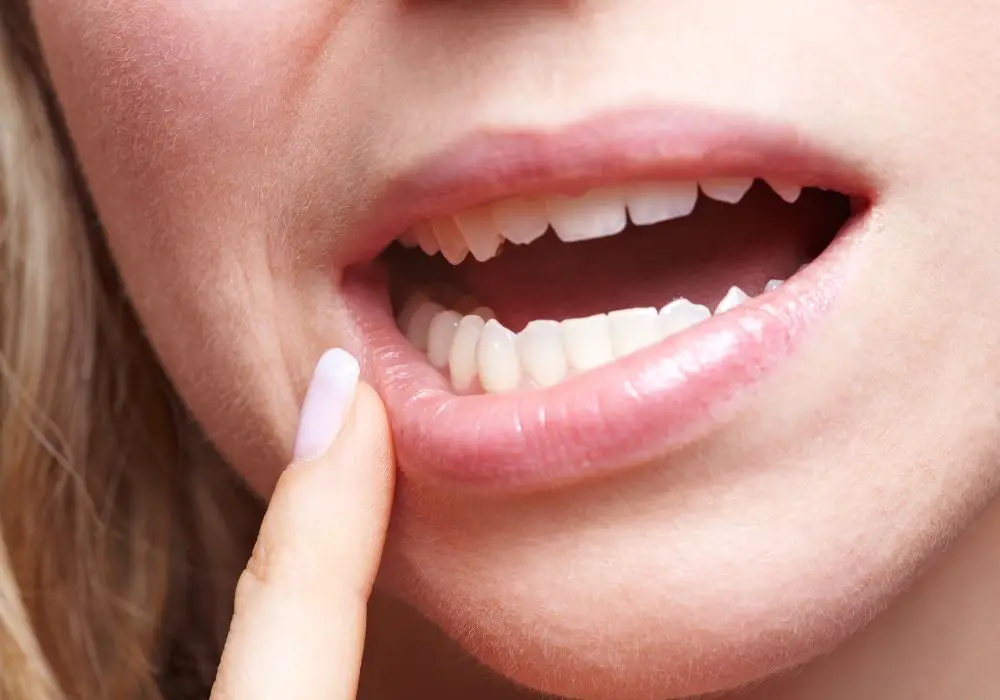
Oral lichen planus is a chronic inflammatory condition affecting the skin and mucous membranes. It frequently appears inside the cheeks and on gums as lacy, white patches. These lesions may occur alone or alongside pink patches or open sores.
Oral lichen planus develops from an overactive immune response causing chronic inflammation. It can cause painful burning, stinging sensations in the mouth. The gums may become extremely sensitive, making eating and brushing difficult.
There is no cure for lichen planus, but symptoms can be managed. Your dentist may prescribe topical gels, mouth rinses containing steroids or other drugs to ease discomfort and inflammation. They can also monitor the patches for any premalignant changes requiring biopsy.
Avoiding possible triggers like allergens, cinnamon flavoring, and certain dental materials may help reduce flares. Stress management can also help, since chronic stress tends to exacerbate lichen planus.
5. Oral thrush
Oral thrush causes curd-like white patches inside the mouth, especially on the tongue, inner cheeks, gums, tonsils, and throat. Unlike leukoplakia, these patches can usually be wiped away. But the tissue underneath appears red and raw.
Thrush results from an overgrowth of Candida yeast naturally present in the mouth. When the environment inside the mouth changes and allows Candida to multiply out of control, thrush develops. Symptoms may include:
- Creamy white lesions, usually painless, on moist mucous membranes
- Red inflamed tissue under patches
- Slight bleeding when patches are scraped away
- Cracks at the corners of the mouth
- Cottony sensation in mouth
- Loss of taste
- Pain or difficulty swallowing
Thrush occurs most often in newborns, the elderly, and those with weakened immune systems. Things that contribute to thrush overgrowth include:
- Antibiotics – destroy healthy bacteria that keep Candida in check
- Steroids or immunosuppressants
- Cancer treatment, HIV/AIDS, organ transplant
- Uncontrolled diabetes
- Wearing dentures
- Poor oral hygiene
Treating thrush involves antifungal medications, mouth rinses or lozenges. Fixing any underlying medical issues can also help clear the infection and prevent recurrence. practicing good oral hygiene is key, even while using antifungal treatments.
6. Medication side effects
Certain prescription drugs may sometimes result in drug-induced cases of leukoplakia or thrush. The medications most associated with causing white lesions or patches in the mouth include:
- Immunosuppressant drugs
Drugs that suppress the immune system make people more prone to oral infections like thrush. Examples include cancer treatment drugs and medications taken after an organ transplant, like cyclosporine.
- Calcium channel blockers
Widely used to treat high blood pressure, heart disease, and other conditions, calcium channel blockers like amlodipine and nifedipine can cause gum overgrowth. The gums become swollen and may take on a reddish-white color. Switching to a different class of blood pressure medicine may resolve the issue.
- Antimalarials
Medications containing chloroquine or hydroxychloroquine to prevent and treat malaria may also lead to white patches in the mouth. These drugs can cause hyperpigmentation in some cases.
- Oral contraceptives
Hormonal birth control pills raise the risk for Candida overgrowth and thrush in some women. Practicing good oral hygiene and using antifungal treatments can generally clear up these yeast infections.
If white patches in the mouth arise after starting a new medication, contact your doctor. They may adjust the dosage or have you switch prescriptions if side effects occur. Be sure to get their guidance before stopping any medications on your own.
When to see a dentist?
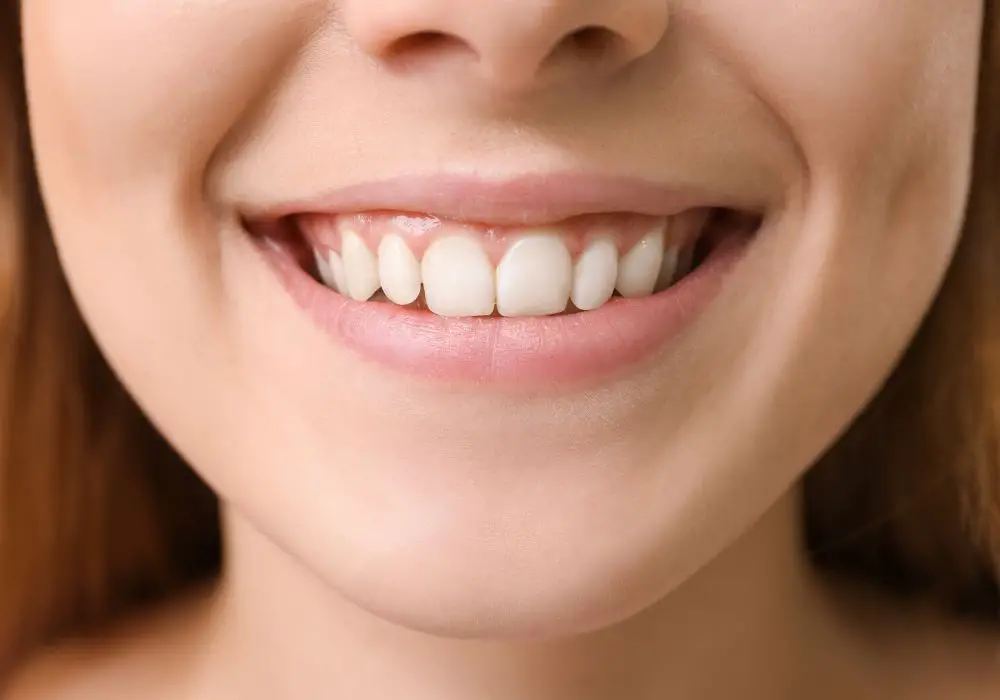
It’s advisable to make a dental appointment whenever you notice unusual changes in the color of your gums. New white patches or spots that don’t go away within 14 days definitely warrant seeing your dentist. They can:
- Perform an oral exam to diagnose the cause of white gums
- Take x-rays to check for bone loss indicating gum disease
- Do tests to confirm thrush or other fungal infections
- Biopsy suspicious lesions to test for dysplasia or oral cancer
- Provide treatments such as scaling and root planing for gum disease
- Prescribe antifungal medications for thrush
- Give you a referral to a periodontist for specialist care if you have advanced gum disease
The sooner you visit the dentist for white gums, the better the outcome typically is. Trying home remedies may just delay proper treatment. Dentists have the tools and expertise to determine the exact reason your gums have turned white.
How to prevent gums from turning white?
Practicing excellent oral hygiene and getting regular professional care can go a long way towards keeping your gums healthy and pink. Try these preventive tips:
Brush and floss thoroughly
- Brush your teeth at least twice a day using proper technique – a soft brush and gentle motions at a 45-degree angle along the gumline.
- Floss gently between teeth daily, curving the floss around each tooth to remove plaque.
- Take care not to scrub aggressively, which can damage gum tissue.
Use antibacterial mouthwash
- Rinsing daily with mouthwash that contains cetylpyridinium chloride, essential oils, or chlorhexidine helps control plaque.
- Look for alcohol-free formulas as alcohol can dry and irritate sensitive gums.
Eat a balanced, nutritious diet
- Avoid sugary foods that feed plaque bacteria. Limit simple carbs like white bread, pasta, and rice.
- Drink plenty of water to help neutralize mouth acidity after meals.
- Eat antioxidant-rich fruits and vegetables, plus foods containing Vitamins A, C, D, and B12 for healthy gums.
Quit smoking and tobacco use
- Smoking is a major risk factor for gum disease, thrush, oral cancer, and other conditions that can cause white gums.
Get regular dental cleanings
- Have professional cleanings and oral exams every 6 months to catch issues early. Your dentist can remove plaque and tartar you can’t reach with home care. More frequent visits may be recommended if you are prone to buildup.
Use a nightguard if you grind your teeth
- Wearing a mouthguard while sleeping helps protect your teeth if you have bruxism. Grinding and clenching can damage gums over time.
Manage health conditions
- Control diseases like diabetes that increase your risks for oral infections and other problems leading to unhealthy gums.
Avoid irritants
Steer clear of anything that can chronically irritate your gums, including spicy foods, smoking, and citrus fruits. Use dental materials that are gum-friendly.
When white gums are normal?
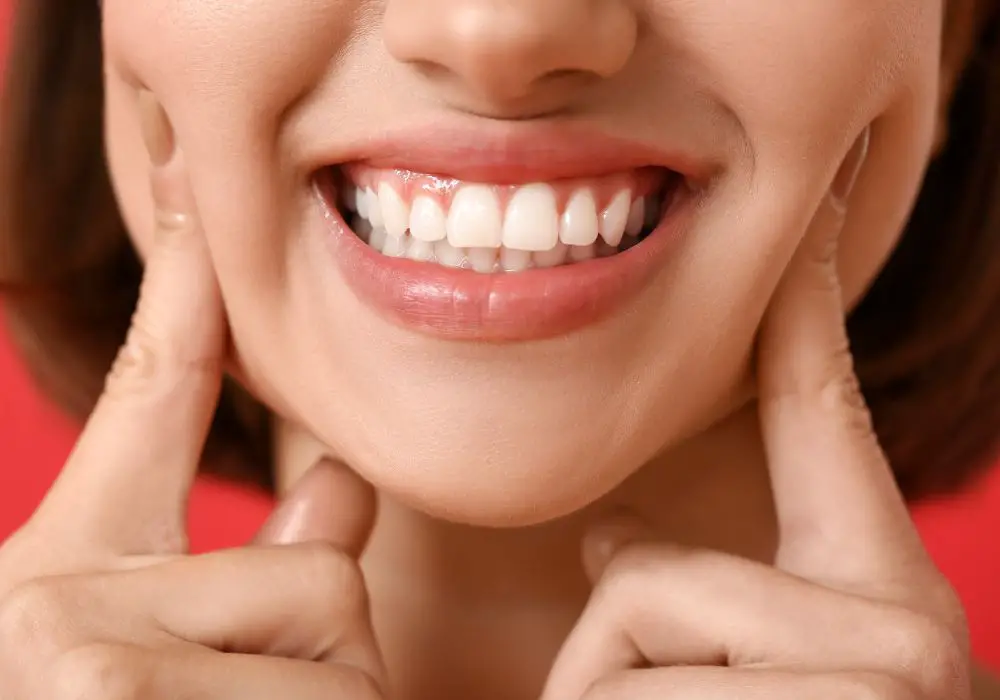
In some cases, lighter colored gums are not necessarily an abnormal finding. Here are some examples:
- People with naturally lighter pigmented gums can appear to have white patches, especially where their thin gums show through.
- As gums recede slightly with normal aging, more of the underlying pale pink tissue near the teeth roots show. This can give a white tinge.
- After professional cleaning, gums may look lighter and feel smooth due to the removal of plaque buildup. Within a few days the natural pinkish color returns.
As long as the gums appear firm and resilient, do not bleed with light brushing, and are not painful, a little lightening is usually benign. Still, it doesn’t hurt to mention any gum color changes to your dentist at your next visit.
Frequently asked questions
Why did my gum turn white overnight?
Sudden gum color changes are unusual. Rapid white discoloration may signal something like an infection or irritation from a new toothpaste. See your dentist to determine the cause. A bacterial or fungal infection requires prompt treatment.
What is the white stuff on my gums?
White patches, spots, growths, or lesions on the gums can be caused by plaque and tartar buildup, thrush, leukoplakia, lichen planus, or other conditions. Your dentist can identify the specific cause and recommend treatment.
Can gums change from pink to white?
Yes, gums can turn from a healthy pink color to white in cases of gum disease, gum irritation, or infection. Deteriorating gums with loss of blood supply often turn white where they separate from the teeth. Oral infections like thrush also show up as white spots on otherwise pink gums.
Why are my gums turning white around one tooth?
When the gum around a single tooth turns white, it’s usually a sign of advanced gum disease affecting that area. An abscess from severe infection or inflammation can also cause whitening around one tooth. See your dentist to treat the gum infection before it spreads.
Should I use baking soda for white gums?
Avoid using baking soda toothpaste or homemade baking soda remedies for white gums. Baking soda has an abrasive effect that can further irritate inflamed gums. Products labeled sensitive or for gum health are better options.



